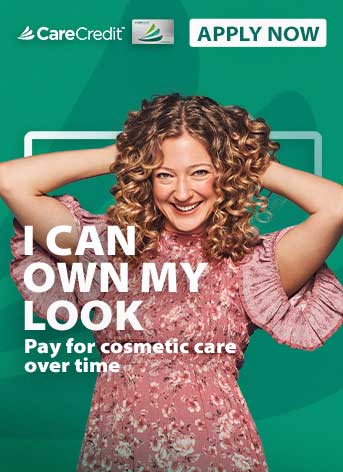If you've ever considered reshaping your nose, you’re not alone — rhinoplasty is the third most popular facial cosmetic procedure in the United States.1 But did you know that a full rhinoplasty isn’t your only option for enhancing the look of your nose? Tip plasty, a simpler form of rhinoplasty that focuses on the tip of your nose, is a less-invasive alternative that can still have a dramatic effect on your appearance.
Read on to find out more about tip plasty and whether it may be right for you.
What Is Tip Plasty?
Tip rhinoplasty, or rhinoplasty tip-shaping surgery, is a specific type of rhinoplasty surgery, or nose job, that reshapes your nose tip to look more aesthetically pleasing.
Whether you are born with an elongated nose tip, experienced facial trauma that changed the shape of your nose or simply dislike the bulbous effect that can be caused by normal aging, you may consider tip plasty to give you the nose shape you desire.
Benefits
In most cases, surgeons perform tip plasty for cosmetic purposes. The nose is the most prominent feature of the face, so people understandably desire a nose that is proportional and aesthetically pleasing. However, in some cases, tip plasty may be performed in conjunction with rhinoplasty to treat a deviated septum, nasal obstruction or another medical condition.2
You may want to consider tip plasty if you feel your nose tip is droopy or bulbous or the tip of your nose over-projects. A cosmetic surgeon can help you assess these concerns and suggest the best procedure or combination of procedures to achieve the look you want.
Tip plasty vs. rhinoplasty
Both of these procedures refine the shape of the nose. However, tip plasty focuses exclusively on reshaping the tip of the nose, while rhinoplasty is a more extensive procedure that involves reshaping the bones of the nose as well as soft tissues.2
Tip plasty could be characterized as an easier procedure because it only involves surgery to the soft, external tissues of the nose tip. Rhinoplasty, on the other hand, involves surgery inside the nasal passages, including reshaping or repairing bony structures.
How Much Does Tip Plasty Cost?
The national average cost* of tip plasty in the U.S. is $8,212 but can vary between $4,750 and $14,225, depending on your location and if you're having the tip plasty performed in conjunction with other cosmetic procedures.3
Average cost of tip plasty by state/district
Below is a breakdown of the average cost* of tip plasty across all 50 states and the District of Columbia.3
| State/District | Average cost |
|---|---|
| Alabama | $8,213 |
| Alaska | $8,386 |
| Arizona | $9,026 |
| Arkansas | $8,870 |
| California | $8,129 |
| Colorado | $7,911 |
| Connecticut | $9,077 |
| Delaware | $7,975 |
| District of Columbia | $8,540 |
| Florida | $8,272 |
| Georgia | $8,436 |
| Hawaii | $8,172 |
| Idaho | $8,036 |
| Illinois | $8,389 |
| Indiana | $7,913 |
| Iowa | $8,951 |
| Kansas | $8,182 |
| Kentucky | $8,174 |
| Louisiana | $8,095 |
| Maine | $8,274 |
| Maryland | $8,282 |
| Massachusetts | $9,160 |
| Michigan | $7,648 |
| Minnesota | $7,798 |
| Mississippi | $6,288 |
| Missouri | $8,047 |
| Montana | $8,338 |
| Nebraska | $7,528 |
| Nevada | $7,680 |
| New Hampshire | $8,358 |
| New Jersey | $8,586 |
| New Mexico | $8,421 |
| New York | $8,382 |
| North Carolina | $8,779 |
| North Dakota | $8,761 |
| Ohio | $7,601 |
| Oklahoma | $8,222 |
| Oregon | $7,445 |
| Pennsylvania | $8,781 |
| Rhode Island | $8,279 |
| South Carolina | $7,879 |
| South Dakota | $8,005 |
| Tennessee | $7,982 |
| Texas | $8,516 |
| Utah | $8,407 |
| Vermont | $7,747 |
| Virginia | $7,772 |
| Washington | $7,538 |
| West Virginia | $8,007 |
| Wisconsin | $8,936 |
| Wyoming | $8,051 |
Is Tip Plasty Covered by Insurance?
Even when you have a tip plasty performed in conjunction with a medically necessary surgery, such as repairing a deviated septum, the tip plasty procedure usually is considered cosmetic and therefore not covered by health insurance.4
Your insurance company likely will calculate and break out a cost for the tip plasty portion of the surgery, which you may be responsible for covering entirely.
Who Is a Good Candidate for Tip Plasty?
Because tip plasty is considered a minor procedure, almost anyone can qualify to have it done. Few medical conditions or medications disqualify a person from receiving tip plasty surgery because it’s usually done under local anesthesia or light (conscious) sedation. If you smoke cigarettes, however, your provider might decline to perform tip plasty on you because smoking reduces oxygen delivery to the skin, which can cause complications in wound healing.5
How Does Tip Plasty Work?
Tip plasty surgery is considered quite safe because it is performed using just a local anesthetic and possibly some light intravenous sedation.
Preparation
Follow your surgeon’s instructions regarding if or when you should stop eating and drinking before the procedure. Prior to the procedure, your surgeon may ask you to stop taking aspirin, other anti-inflammatory medications or certain herbs that can promote bleeding.6
After you arrive at the clinic or the surgical facility, you may be asked to change into a hospital gown. If you’re receiving intravenous (IV) sedation, a nurse may place an IV line in your hand.
Procedure
The procedure itself generally is straightforward:
- The surgeon will inject numbing medication into the tip of your nose and possibly surrounding tissues.
- The surgeon may also place small absorbent rolls inside your nostrils.
- Once the tip of your nose is numb, you may feel some pulling as the surgeon makes incisions, removes tissue and sutures the skin.
- The surgeon may have you sit up (or elevate the head of the table) and lie back down multiple times so they can assess the shape of your nose from multiple angles before finalizing the surgery.
- After the procedure, the surgeon may apply tape, gauze rolls or other types of dressings to support the tip of the nose during the initial phase of healing.5
The surgery itself may take anywhere from one to three hours. Your total time at the facility, from arrival to departure, may be up to six hours.
What to Expect After Tip Plasty Surgery
You will go home soon after the procedure is completed and should follow all of your surgeon’s instructions regarding post-op care. You should be able to return to work within days, though your surgeon may advise you to avoid strenuous activities or heavy lifting for a while. Your surgeon or their nurse will advise you how long to leave any dressings in place and when to schedule your first follow-up appointment.
Potential side effects
After the procedure, you may experience possible side effects of the tip plasty surgery. Your nose tip will be swollen, and many people are surprised to learn that this swelling can take months or even years to fully subside. It’s not uncommon for the swelling to go up and down over the course of months. This is not abnormal or a complication. You should stay in close contact with your surgeon to monitor the swelling over the ensuing months. Your provider may offer additional treatments like steroid injections to address persistent swelling.5
You may not see the final results of the tip plasty for at least a year after the procedure, so you’ll need to have patience.
Other common issues after tip plasty include:5
- Mild difficulty breathing through the nose, depending on swelling and the placement of dressings
- Oozing or bleeding at the surgical site
- Dissatisfaction with the result
- Depression or dysphoria related to the new appearance of your nose
While most people are satisfied with the result of their tip plasty, some people have trouble adapting to their new nose. Seek the advice of your surgeon or a therapist if you find yourself feeling depressed after the procedure.
Financing a Tip Plasty With the CareCredit Credit Card
Ready to revitalize your appearance and boost your confidence? The CareCredit credit card makes it easy to pay for tip plasty and related expenses not covered by health insurance.** Use our Acceptance Locator to find a doctor or cosmetic surgeon near you that accepts CareCredit so you can stop dreaming and start living your best life. Continue your wellness journey by downloading the CareCredit Mobile App to manage your CareCredit account, find a provider on the go and easily access the Well U blog for more great articles, podcasts and videos.
In addition to cosmetic procedures, you can also use your CareCredit credit card for dentistry, pet care, vision, hearing, health systems, dermatology, pharmacy purchases, spa treatments and so much more within the CareCredit network. How will you invest in your health and wellness next?
Author Bio
Elizabeth Hanes, R.N., has substantial clinical experience and diverse expertise including critical care, plastic and reconstructive surgery, heart health, nutrition and senior health. For over 20 years, she has blended her clinical background with writing for leading healthcare publications, such as WebMD, Anthem, Healthgrades and Modern Healthcare, among others. She is committed to creating exceptional healthcare content that informs and educates both patients and health professionals.








